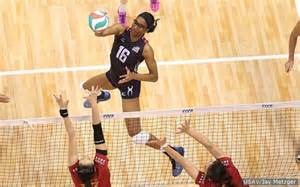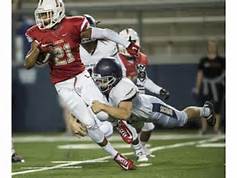A high school cheerleader and lacrosse player interested in returning to activity after concussions asked if a change of position could lower concussion risk.
The cheerleader would move from base to tumbler, while the lacrosse player would become a wing and not take face-offs.
The lacrosse player was also concerned with reducing repeated blows to his head. Each impact not hard enough to cause a concussion (called sub-concussive impacts) but added up over time, could lead to higher concussion risk or other brain damage.
Seems obvious that not being constantly hit in the head or at risk for falls gives lower concussion risk and reduces cumulative brain injury.
As I talked to them and their families, I did wonder:
Are there indeed certain positions or playing styles that are shown to have a lower concussion risk?
When determining return to play after a concussion, can we reasonably recommend position changes to allow return to higher risk sports compared to no return at all?
Would some families even seek out lower concussion risk positions to protect their athletes from first concussions?
So I did a literature search and considered past experiences.
The results are the following review of positions and playing styles that may have lower concussion risk. Some of the following may seem so simply obvious, most casual sports could come up with them. Others may be a bit more eye-opening. In many cases, there isn’t enough data or experience to make solid recommendations. Some sports are missing- not because I didn’t think of them, because there wasn’t any studies discussing more at-risk positions or playing styles .
Now, I will admit that not every athlete can or will want to change positions. Certain skills sets and physical attributes (height, weight,) don’t always translate to every position on a team. Some athletes identify with “their position” or are unwilling to change their style of play.
I will also admit that this is not meant to be an absolute guide to making return to play decisions. I strongly believe that every athlete and family deserve a thoughtful individualized return to play discussion. This is what I do every day in my practice, no matter the injury or level of participant.
Cheerleading
Seems sensible that staying away from stunts and pyramids can lower concussion risk. A study of high school cheerleading injuries found 85% of concussions occurred during these activities mostly due to contact with other participants. Looking at all injury types, bases had the highest reported injury rate, followed by flyers and spotters. The increased risk for bases and spotters was found in another study that looked at elementary through collegiate cheerleaders. Tumblers contributed to only 10% of concussions, mostly due to contact with the floor.
Overall, cheerleading had lower concussion rates than other sports. However there were equal practice and competition concussion risks, whereas many sports have lower concussion risks in practice.
Conclusion: Staying farther away from other participants doing stunts, throws and pyramids can lower but not eliminate concussion risk. Tumblers certainly have reduced chances of others hitting or dropping them, but they do have the unique challenge of face plants. The relative higher risk of practice may be due to more time in practice per day (hours) versus competition (minutes). Not certain if more injuries occur later in practice sessions. If so, shorter practices or doing higher risk routines earlier in a session may reduce fatigue and overall injury risk.
Water Polo
Goalies at all levels, including high school, were found to be at the high risk for concussion in a published survey of water polo players. This was due mostly to ball contact during practices. In high school water polo players, 2 meter defenders also had a higher concussion risk than other field players.
Conclusion: Field players (except for possibly 2 meter defenders) appear to be at lower concussion risk. Practice risk to goalies might be from multiple balls coming at them during shooting drills. Reducing overall balls in play or requiring goalies to acknowledge shooter before shots can lower concussion risk.
Football
In high-school football players, linebackers were the most commonly concussed on defense and running backs on offense. College and professional studies identified higher risks for quarterbacks and running backs, linebackers and offensive linemen, tight ends and defensive linemen, and defensive backs.
Concern has also been raised about higher levels of injury risk during kickoffs and other special teams play.
The greatest number of repetitive head impacts occur in linemen due to contact on every play (practice and game days). There are also fewer opportunities for limited or non-contact lineman practice drills. Offensive linemen may develop more symptoms from repetitive impacts and may not report them as from a concussion. Linebackers join lineman in having the most head impacts in practice or games according to one collegiate study.
Conclusion: It doesn’t appear than any one position has a lower concussion risk (except for maybe punter or kicker). Some may argue defenders delivering hits have more control and less risk, but these results do not support that thought. Looking strictly at repetitive head trauma, there seems to be little doubt that lineman are at the highest risk. Reducing special teams play (especially “ear hole hits” with rapid change of direction) could lower concussion risk.
Soccer
Heading the ball is the most common activity associated with concussion, due most to athlete-athlete contact. Girls have a higher relative risk of concussion while defending. Goalkeepers have unique challenges of contact with goalposts, ground (diving) or from stopping balls at close range.
Conclusion: Type of play rather than position seems to be the biggest variable to lower concussion risk. Players who are known as “headers” are at risk for vulnerable, unprotected body contact off the ground. Requesting not to be asked to head the ball may lower concussion risk but not eliminate it. Goalies may reduce risk by putting arms up to protect the head and not having multiple practice balls shot at once.
Ice Hockey
Minimizing the frequency and intensity of collisions may lower risk. No studies were found comparing concussion rates between goalies, defenders, centers and wings.
Conclusion: Much like soccer, the type of play rather than position dictates lower concussion risk. Recommending non-checking leagues may be a sensible activity change to lower concussion risk.
Volleyball
Liberos and outside hitters showed to be significantly affected from sport-related concussions in a study of play
Conclusion: The risk of volleyball concussion seems to be related to level of play. Less-experienced athletes likely have more chaotic plays. A setter who has to chase more “out of system” balls is at risk for collision with others and the playing surface. Middle blockers in lower levels may be at higher risk for contact with the net and poles. Passing and digging at higher levels (including my experience with USA Volleyball National Teams) puts liberos and outsider hitters at risk during serve reception and other defensive activities.
Lower concussion risk can occur with ball control during practice sessions. Players returning or collecting balls during serve/hitting drills must always be aware of incoming balls directed toward them.
Baseball/Softball
Conclusion: Can probably include the debate about headfirst slides into the risk of running the bases. Have to think that the smaller field of softball makes infielders at higher risk of direct head impacts. Softball outfielders have less risk of being hit from line drives or hard grounders.
Final Thoughts on Lower Concussion Risk:
I was unfortunately unable to find any evidence to support my lacrosse player’s thought of changing positions.
There are several other sports that did not have data on higher versus lower risk positions.
I do hope that this review furthers discussion of the role of position or activity changes that lower concussion risk, and I welcome comments and additional evidence or experiences.



